Ballinwillin
Houses within 15km of this house
Displaying 59 houses.
Houses within 15km of Ballinwillin
Displaying 59 houses.
| House name | Description | |
|---|---|---|
| Ahnagurra | Ahnagurra was the residence of Thomas T. Adams in 1837 and at the time of Griffith's Valuation, when the buildings were valued at £26. He held the property from Francis Coppinger. | |
| Ballynalacken | A house valued at £15 and occupied by George Gubbins who held it from Francis Coppinger at the time of Griffith's Valuation. It is no longer extant. | |
| Griston House | The residence of a branch of the Massy family, occupied by Frederick Massy in 1814. Described by Lewis in 1837 as the fine old family mansion of the Masseys. Fitzgerald writes that Charles Massy of Griston was a brother of Lord Massy and 1st Lord Clarina. At the time of Griffith's Valuation it was valued at £12 and occupied by Michael McMahon, who held it from Charles O'Brien Massy. | |
| Ballynacourty | In 1837 and at the time of Griffith's Valuation occupied by Michael Burke. In the 1850s it was valued at £13 and held from the Honourable C.B. Wandesforde. | |
| Darragh House | The residence of Fred Bevan in the early 1850s, held by him in fee and valued at £12+. In the 1870s Hamilton Geale/Gale lived at Durragh Lodge. The house is now known as Darragh House and is still extant and occupied. Self catering accommodation is available, see www.darraghcottages.com. |

|
| Massy Lodge | This house is named Massy House on the first Ordnance Survey map and was the main residence of Lord Massy in the first decade of the 19th century. In 1814 Anglesborough was occupied by Hugh Toutstone [Touchstone]. Lewis describes Massy Lodge as the elegant residence of Lord Massy. At the time of the first Ordnance Survey Massy Lodge was the residence of Robert Harding. It was held by Lord Massy in fee at the time of Griffith's Valuation and valued at £24+. The partly demolished house is now owned by the Hanly family. |

|
| Janeville | A house located very close to the county Tipperary border, occupied by the Reverend R. Lloyd in 1837 and by Samuel R. Harding at the time of Griffith's Valuation. The buildings were valued at £17+ and held from Thomas L. Sadlier. | |
| Loughananna | At the time of Griffith's Valuation a house at Loughananna was occupied by James McGrath, valued at £10+ and situated on the Kingston estate. By 1906 the mansion house at Loughananna was valued at £50+ and Abel Buckley is recorded as the occupier. | |
| Ballykeating | A house probably built in the mid 19th century, occupied by John Grove Annesley who held the property from his father General Annesley. It was valued at £14 at the time of Griffith's Valuation. Sold to the Callaghans in the mid 1890s. The Callaghans continued to own the property until the late 1970s. A property much associated with horse racing and hunting. Buildings are still extant at the site. | |
| Lisnagoorneen | Hajba writes that Thomas Franks, a nephew of Thomas Franks of Ballymagooly, occupied this house at the end of the 18th century. He married Margaret Maunsell of Ballybrood, county Limerick. They and their son were murdered by Whiteboys in 1823. A new house was built by George Foster Delaney in the 1830s and he was succeeded by his nephew George Johnson who occupied the house at the time of Griffith's Valuation. It was valued at £17 and held from the representatives of G.B. Lowe. The Johnson remained in possession until the early 20th century leasing the house to Major Mansergh among others. In 1942 the Irish Tourist Association survey noted that the Major had owned a famous horse called Lord Cunningham and that Lisnagoorneen house was then occupied by his nephew. |

|
| Ballyenahan | A house on the Hyde estate inhabited by the Welsh, Kearney, Spratt, Greene and Barry families in the late 18th and 19th centuries. Wilson, writing in 1786, refers to it as the seat of Mr. Walsh. Eliza Greene was the occupant at the time of Griffith's Valuation when the buildings were valued at £18. The Barrys owned this house until the late 20th century. |
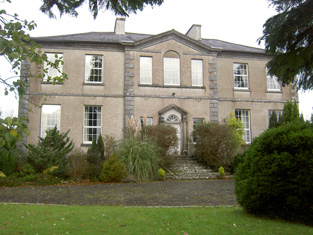
|
| Bowen's Court | Built in the 1770s by Henry Cole Bowen this house was the seat of the Bowen family until 1959 when it was sold by the author Elizabeth Bowen. Wilson, writing in 1786, refers to it as Faraghy, the seat of Mr. Cole Bowen. It was held in fee by Mrs. Eliza Bowen at the time of Griffith's Valuation, when it was valued at £75. In 1942 the Irish Tourist Association Survey noted that the house had been attacked during the 1798 rebellion. Bowen's Court was demolished in 1961. |
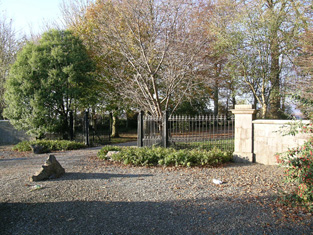
|
| Meadstown | Burke's ''Landed Gentry of Ireland'' (1904) records the Franks family of Maidstown, county Cork. Hajba dates the present house circa 1860 replacing an earlier house. At the time of Griffith's Valuation the Reverend James Golden occupied Meadstown which he held from Henry Franks. The buildings were valued at £10.15 shillings. This house is still occupied. | |
| Ballyclogh [Ballyclough] | This property was inherited by the Barrys through marriage with a member of the Purdon family. Parts of this house may have dated from the 17th century. Lewis writes of "a handsome mansion in the Elizabethan style". Additions were made in the 19th century. At the time of Griffith's Valuation it was valued at £34 and held by James Barry in fee. The house was burnt in the 1920s. The north wing survived, built 1904. In 1944 the Irish Tourist Association survey noted that Ballyclough was the birthplace of Sir Redmond Barry, "prominent in public life in the state of Victoria, Australia". It was restored and is still a residence. |
![Photo of Ballyclogh [Ballyclough]](https://landedestates.ie/storage/img/orig/1568.jpg)
|
| Airhill | The home of the Green family for over two centuries, occupied by Colonel H. G. Barry in 1814 and by James Greene at the time of Griffith's Valuation. James Greene held the property from Francis Wyse. The buildings were valued at £20. This house is still a family home. | |
| Sandville | This house valued at £13 was occupied by Mary Sullivan and held from - Roberts at the time of Griffith's Valuation. Hajba writes that it was occupied by Mrs Ellen Punch in 1910. It was bought by the racing trio of Sangster, Pigott and O'Brien in the late 1960s. The house was demolished and the property became a stud farm. | |
| Downing | This was the home of the Hendley family in the 19th century. Robert Hendley was the occupier in 1814 and Arthur Henly in the early 1850s. Arthur Henly held the property in fee and the buildings were valued at £9.5 shillings. | |
| Springvale | This house was ccupied by Roger Bourke in 1814 and by Roger S. Bourke in 1837. Roger Burke was married to a sister of Garret Nagle of Ballinamona. William Baily was resident in the early 1850s and held the property from the Earl of Kingston. The buildings were valued at £14.10 shillings. Grove White writes that Springvale was purchased by George Grehan of Clonmeen in 1855 and John J. Therry, his agent, lived there. In 1942 the Irish Tourist Association noted it as the residence of Mrs. Helen Clancy, a descendent of Therry. Although abandoned for some years in the 20th century the house has now been restored and is lived in again. |

|
| Woodfort | George Massy occupied this house, which he held from the Reverend Samuel Adams, in the early 1850s. It was valued at £20. The home of the Magniers at the beginning of the 21st century. |

|
| Rockmills Lodge [Rockmills House] | The lodge was the residence of Colonel Richard Aldworth in 1814. Hajba writes that it was built as a shooting and fishing lodge by Colonel Richard Aldworth in 1776 and that he left the property including the mills to his wife's nephew, Charles Deane Oliver (grandson of Robert Oliver of Cloghanodfoy). Occupied by Mrs Sarah Oliver in 1837 and at the time of Griffith's Valuation and held by her from the representatives of Bond Lowe. The buildings were valued at £25 and she was leasing a flour mill and other buildings valued at £170 to P.L. Lyster. This property was advertised for sale in June 1856. The house was burnt in May 1921 during the War of Independence when it was the residence of Charles Deane Oliver. In 1942 the Irish Tourist Association Survey noted that it had been rebuilt by the Walsh family and was then (1942) occupied by the Casey family. It is still extant. The mills are now in ruins. |
![Photo of Rockmills Lodge [Rockmills House]](https://landedestates.ie/storage/img/orig/1591.jpg)
|
| Rockville | At the time of Griffith's Valuation occupied by Michael Mockler and held from the representatives of Matthew Hendly, the buildings were valued at £26. The Mocklers advertised the sale of their interest in July 1851 and July 1853. The sale rental records the lease of Rockville by Ferguson Hendley to the Reverend James Mockler for 3 lives in July 1841 and that £2,000 had been spent on the house. Caroline Bourke occupied a mansion house with 37 acres in the townland of Licklash in 1906. It was valued at £60. In the 1870s Michael Bourke of Lecklash owned 37 acres. This house later became a summer home of Sir Oswald Mosley. Also known as Isleclash House. |
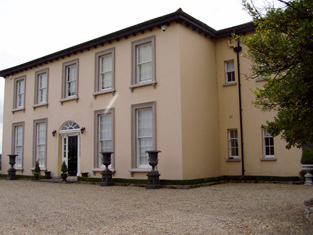
|
| Mitchelstown Castle | The original castle belonged to the FitzGibbons, the White Knight. It passed through the marriage of Margaret FitzGibbon and Sir William Fenton to the heirs of their daughter, Catherine, and her husband, Sir John King. By the mid 18th century the Kings had replaced the castle by a house which was altered and extended over the years. In 1786 Wilson refers to it as "the very magnificent seat of Lord Kingsborough". In the 1820s the 3rd Earl built a new castle in anticipation of a visit from George IV which never happened. This was a huge building in the Gothic Revival style, valued at £180 in the mid 19th century. It remained in the possession of the Kings until the death of Lady Kingston, widow of the 5th Earl. In 1922 the castle was looted and burnt and the stones were later used to build a church at Mount Melleray. In 1943 the Irish Tourist Association Survey provided a detailed description of the castle and its history and noted that portion of the cellars and foundations were still visible. |

|
| Marshalstown | This house was known as Castle Eugene in 1837 when it was the home of Eugene O'Neill, medical doctor. Dr O'Neill was still resident in the early 1850s when the house was valued at £41.10 shillings and held from the Earl of Kingston. This house no longer exists. | |
| Brook Lodge | The Lord Chancellor is given as the occupier of this house at the time of Griffith's Valuation. The Court of Chancery may have held the property from John Denehy at this time. The buildings were valued at £13. In 1942 the Irish Tourist Association Survey notes that it was once the residence of General Sir Thomas Dennehy and was then owned and occupied by James Scannell. A new house is now located on the site. | |
| Bettyville | The home of the Nason family in the early 19th century, occupied by Richard Nason in 1814 and 1837. By the early 1850s William Corbin was resident holding the house valued at £14.10 shillings from the representatives of Richard Nason. William Corbin was still living at Bettyville in the 1870s. This house is no longer in existence. | |
| Maryville | The home of Laurence Corban in 1837 when Lewis records it as “ a handsome mansion of recent erection and finely situated on the Funcheon [River]”. Laurence Corban held Maryville House and the mills in perpetuity at the time of Griffith's Valuation. The house was valued at £32 and the mills complex at £160. The Lucas family succeeded to this property and Hajba writes that it became the dower house for nearby Ballynacarriga. The Irish Tourist Association surveyor in the 1940s reported that it was then occupied by Mr. Glass, an agricultural instructor. In 1965 the house was sold by the Corban Lucas family. It remains a family residence. | |
| Rath-healy | In 1786 Wilson refers to Rath-hely as the seat of Mr. Bryan. It was the home of Arthur Hyde Lucas and his son and namesake in the 19th century. Arthur Hyde Lucas is recorded as occupier at the time of Griffith's Valuation, holding the property from John Hyde when it was valued at £20. In 1880 the property passed to Henry John Lucas, nephew of the second Arthur Hyde Lucas. Sold by the Lucas family in the 1920s and still inhabited. | |
| Ballynacarriga | A mid 18th century house, home of the Pyne family for over a century until they sold it in the Encumbered Estates' Court in 1852. Before the sale John G. Pyne was resident, holding the property in perpetuity. The buildings were valued at £18.10 shillings. Bought by Laurence Corban it passed from the Pynes to the Corban Lucas family, members of whom were still resident at the beginning of the 21st century. |

|
| Mounteagle Cottage | Hajba writes that this was a sporting lodge of the Earls of Kingston. In the early 1850s it was occupied by Thomas O'Brien and valued at £14.10 shillings. It is still a residence. | |
| Careysville | Careysville Castle, originally known as Ballymacpatrick Castle, was the seat of the Carey family from the late 17th century. In 1750 Careysville was occupied by John Carey and Peter Carey was resident in 1814. In 1837 Lewis refers to “the handsome modern mansion built on the site of Careysville castle” by E.K. Carey. Valued at £50 in the mid 19th century the Careys held this property in fee. Inherited by the Montgomerys of Killee and sold by them to the Duke of Devonshire in the mid 20th century. In 1942 the Irish Tourist Association Survey noted that the house was then unoccupied as Captain Montgomery had moved into a modern bungalow nearby. Careysville is now in use as a fishing lodge offering luxury accommodation. |

|
| Moorepark | A large Georgian house, the seat of the Earls of Mountcashell, extended in the 19th century. In 1786 Wilson describes it as "a superb and noble seat". It was held in fee at the time of Griffith's Valuation when it was valued at £87. Bought by the War Department in 1903 and accidentally burnt in 1908. In 1944 the Irish Tourist Association Survey noted that the remains of the kitchen were still visible then. Nothing remains of the original house and the site now belongs to Teagasc, the Agricultural and Food Development Authority. | |
| Glandulane House | Robert Briscoe had a house and flour mill in the townland of Clondulane North in the mid 19th century, which he held from the Earl of Mountcashel. The house was valued at £25.10 shillings and a flour mill at £96. Later the home of the Hallinans and the O'Donnells. A house is still extant at the site but the mill buildings are now ruinous. |

|
| Licklash | Occupied by James Reid in the early 1850s and held from the representatives of Matthew Hendly, the buildings were valued at £18. This house later became a summer home of Sir Oswald Mosley. Also known as Isleclash/Ileclash House. This house was offered for sale in 2010. http://www.michaelhdaniels.com/index.cfm?fuseaction=propdetails&Prop_RefId=24 |
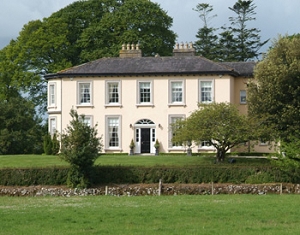
|
| Mountrivers | This house was a Hendley home in the 18th and 19th centuries, occupied by Mathers Hendley in 1814 and Mattias Hendley in 1837. Mattias C. Hendley was resident in the early 1850s. He held the property in fee and the buildings were valued at £27. The Hendleys contined to reside at Mountrivers until the 1930s and the house is still occupied. |
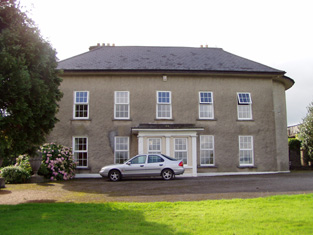
|
| Killee | The seat of the Montgomery family from the mid 18th century, occupied by George Montgomery in 1814 and by William Quinn Montgomery in the early 1850s. It was held in fee at this time and valued at £43. Killee remained in Montgomery possession until the 1930s. It is still occupied. |

|
| Grange Hill/The Grange | William Forward Austin was resident at Grange Hill in 1837 and in the early 1850s when he held the house valued at £41 in fee. Hajba writes that this property belonged to William Forward and was inherited by one of his daughters who was married to William Austin. William F. Austin was their son. Later the home of the Sadliers [1906] and Magniers, still inhabited. William Sadleir medical doctor was resident from circa 1866. |
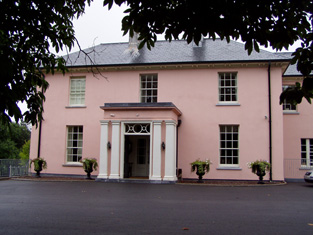
|
| Ashfield House | Occupied by John William Anderson in 1837 and by Denis Downing in the early 1850s who held the property from John Hyde. It was valued at £25. In 1942 the Irish Tourist Association Survey indicated that it was then the residence of William Bowden. This house is still occupied. | |
| Grange Farm | Originally part of the Forward estate which passed to Garret Nagle who had married the sister of William Forward. Marked on the first Ordnance Survey map as a farm yard by the 1850s James Roderick O'Flanagan was resident in a house valued at £13.5 shillings. He held the property from the representatives of John William Anderson. |

|
| Fermoy House | Lewis refers to Fermoy House in 1837 as the residence of the late J. Anderson “to whom not only the town owes its prosperity but the entire country…”. It was then occupied by Mrs Hennis. The Reverend Maurice Collis was in residence by the time of Griffith's Valuation. He held the property from Sir Robert Abercrombie and the buildings were valued at over £50. In 1786 Wilson writes of a house at Fermoy, the seat of Mr. Bryan. The Irish Tourist Association Survey of 1942 states that Fermoy House was then the property of Maurice Cooke Collis and was divided into five flats. The house was demolished in the 1960s. | |
| Rushmount | Located on the Mountcashell estate this house was occupied by Daniel Gearan in the early 1850s, when it was valued at £19. It remained in the possession of the Gearan/O'Geran family for the rest of the 19th century. |
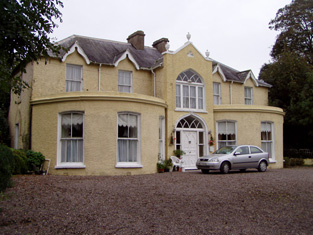
|
| Douglas House | Occupied by Henry Deece in 1837 and by Lady Mountcashell in the early 1850s. Held from the Earl of Mountcashel and valued at £16.10 shillings. Later the home of the Magniers and still a residence. |
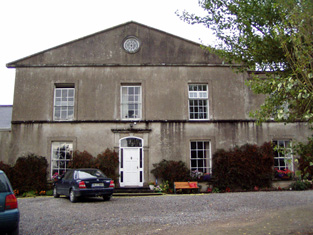
|
| Woodview | Occupied by Lieutenant F.Prangnall RN in 1837 and held by the Earl of Mountcashel in fee at the time of Griffith's Valuation when it was valued at £16. 5 shillings. Later occupied by the Smithwick and by the Lucas family in the 20th century until a fire in the 1930s. Recently restored and occupied again. | |
| Glansheskin | Occupied by John P. Pierse in the mid 19th century. He held the property valued at £19+ from the Earl of Mountcashel with a cornmill valued at £20. Later the property of the Cooke Collis family, this house is still occupied. | |
| Broomhill | Valued at £11, occupied by James Geran and held from James N. Cronin at the time of Griffith's Valuation. Later the home of a member of the Montgomery family and still inhabited. | |
| Cloonkilla | James H. Mandeville held buildings valued at £21 from James N. Cronin among the woods at Cloonkilla at the time of Griffith's Valuation. | |
| Park House | Hajba writes that David Richard Pigot, Chief Baron of Ireland 1846-1873, was born at Park House in 1797. He was the son of Dr John Pigot and Margaret Nagle and married Catherine Paye [Page in DNB] of the nearby Araglin Mills. Th house was valued at £7.10 shillings in the early 1850s and was occupied by the Reverend James Daly, who held it from William Byrne. The Pigotts continued to own this property until at least the late 19th century. Occupied by the Howard family in the 20th century. The Irish Tourist Association Survey notes that it was also referred to as "Rock House". The survey also refers to another house owned by the Pigot family on the main street in Kilworth. | |
| Knockatrasnane | At the time of Griffith's Valuaiton, William Collis held in fee a house and offices valued at £14.10 shillings in this townland. The 1st edition Ordnance Survey map indicates a nursery at this site. The remains of the buildings are still extant. | |
| Castle Cooke | A house was located here from the 17th century. Originally home of the Cooke family it was altered and expanded in the succeeding centuries by the Collis family. William Collis was resident for much of the 19th century. The house was valued at £32 in the early 1850s and at £34 when occupied by Colonel William Cooke Collis in 1906. It was burnt in June 1921 during the War of Independence when it was the residence of Col. William Cooke-Collis. This house is no longer extant. | |
| Leitrim | Home of the Campion family for two centuries, sold by them in the 1870s to Major Victor Reeves of the Castle Kevin family. In 1943 the Irish Tourist Association Survey referred to it as the residence of David Nunan, formerly owned by the Campions, "in their day the house was thatched and much smaller". This 17th century house is still a residence. |

|
| Araglin Cottage | Located on the bank of the Araglin River and built for Robert Viscount Kingsborough, later 4th Earl of Kingston, this was probably the summer residence recently erected by the Honourable Robert King in the parish of Templemologga, referred to by Lewis in 1837. It was offered for sale in July 1851 with 3,951 acres held by the Earl in the barony of Condons and Clangibbon. Sold to the Morlands who leased it as a fishing lodge, this house is now a family home. In the 1870s John Sherlock of Aroglin Cottage, Kilworth, was recorded as the owner of 183 acres in county Cork. |

|
| Glenwood | Marked on the first Ordnance Survey map this house was occupied and held in fee by - Teulon at the time of Griffith's Valuation, when the buildings were valued at £23. By 1906 Glenwood valued at £33 was occupied by A. C. Fleury, a minor. In the 1940s the Irish Tourist Association survey noted that it was then the home of Mrs.Pennefather, "mother of the famous artist, who came to live here about twenty years ago". Glenwood is still extant. |
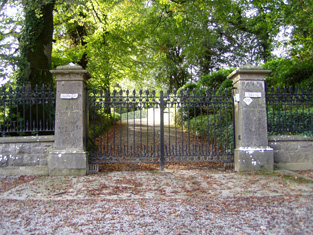
|
| Stannard's Grove | Located on the Cotter estate, this house was occupied by the Stannard family at the end of the 18th century. It was later occupied by the Adams and Smith families. Lewis records it as unoccupied and at the time of Griffith's Valuation it was held in fee by Edward Cotter. The home of William Stackpool at the beginning of the 20th century. Hajba writes that the house was reconstructed in 1924 after been blown up in 1921 by the British Crown Forces. In 1942 the Irish Tourist Association Survey noted that it had, since 1934, been owned by the Herlihy family. It is still extant. |

|
| Shanbally | In 1786 Wilson refers to Shanbally as a seat of Viscount Lismore. It was occupied by John Mahoney and valued at £10.15 shillings at the time of Griffith's Valuation, held from Viscount Lismore. In 1894 Slater refers to it as a residence of Viscount Lismore. | |
| Ballywilliam | Joshua Sutton lived at Ballywilliam in 1814. In 1851 the estate of William Parry Sutton, a minor, was offered for sale in the Encumbered Estates Court. It included interest in the lands of Shanrahan. The purchasers included Messers. Carroll, Greaves and Mooney, in trust. At the time of Griffith's Valuation, James King was resident, when the buildings were valued at £9.10 shillings and held from the Irish Land Company. |

|
| Galtee Castle | Built in the late 18th century as a hunting lodge, it was described in the Kingston sale rental of July 1851 as a "handsome cut stone building, erected in a tasteful style of architecture, with suitable offices .... beautifully situated in the curve of a well planted glen..". Located close to the eastern bank of the Attychraan River at the base of the southern slope of the Galty Mountains, this house was occupied by James Law in the mid 19th century, valued at £29+ and held by him in fee. Noted by Slater in 1894 as the home of Nathaniel Buckley and of Abel Buckley in 1906 when the buildings were valued at £130. The house is no longer extant. Also known as Mountain Lodge. | |
| Mountain Lodge | In the mid 19th century Viscount Lismore owned a house/hunting lodge valued at £7 in the townland of Cullenagh (2,740 acres) which he also owned. This building has since been extended and is still in use as a youth hostel. |

|
| Ballybeg (Mitchelstown) | In 1786 Wilson states that "Ballybeg, the seat of Mr. Spratt, was pleasantly situated at the foot of a lofty mountain" outside Mitchelstown. Local history suggests that this was a property acquired by Devereux Spratt in the 17th century. It is not named on the 1st edition Ordnance survey map though buildings are shown at the site. | |
| Kilshanny | Wilson, writing in 1786, refers to Kilshanan as the seat of Captain King. An unnamed property is shown in the townland of Kilshanny on the 1st edition Ordnance Survey map which was later to be the site of Mitchelstown workhouse. It is no longer extant. | |
| Aghacross | Wilson, writing in 1786, refers to Aghacross as the seat of Mr. Anderson. No substantial residence is shown in this area on the 1st edition Ordnance Survey map. The townland was in the possession of William Anderson at the time of Griffith's Valuation. A modern farm exists at the site now. |

